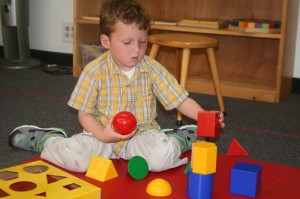
For 15 years, I have taught in schools in the United States (eight years in preschool). Before that, I was obviously a student. Children spend a lot of time in daycare and early childhood educational facilities. In fact, more of their waking hours may be spent at school than at home, especially if both parents work full time. Considering how susceptible children are to toxic chemical exposure and the amount of time they spend in school, the results of a new UK study finding “classrooms are a significant source of exposure to flame retardants and polycholorinated biphenyls (PCBs) for children from 1 to 6-years-old” is alarming.
Inhabitots explains the University of Birmingham research:
Since kids spend a lot of time in classroom settings, this raises a red flag. Researchers looked for seven PCBs and three main types of brominated flame retardants: hexabromocyclododecane(HCBD), a derivative of bisphenol-A tetrabromobisphenol-A (TBBP-A), and polybrominated diphenyl ethers (PBDEs), which are now banned, yet they were still detected in all of the 43 United Kingdom classrooms tested.
HBCD is one of the biggest concerns. The chemical was detected in all dust samples and levels were significantly higher than those recorded in homes and offices. Even though animal studies have linked HBCD exposure to endocrine disruption, the largely used flame retardant is currently unrestricted in the United States, Europe and the United Kingdom. The chemical has been identified as a concern under REACH, a new European Community Regulation on chemicals and their safe use.
Just like in the home, sources of flame retardants exposure at daycare are furniture, carpeting, fabrics, electronics, etc. These chemicals are so prevalent they are even found in breast milk.
Exposure in US daycare and early childhood educational facilities may be even higher than in the United Kingdom. Inhabitots concludes:
However, according to Environmental Health News, data suggests the PCB levels in US daycare centers are higher and may pose a bigger threat to kid’s health. The chemicals are used in construction materials such as sealers and as those materials break down, the toxins can pollute indoor air. This study just adds fuel to the fire for the push to look for eco-friendly building solutions and non-toxic products to keep our families healthy.
[…] schools to killer whales, these unavoidable toxic PCBs may be responsible for the attention and […]